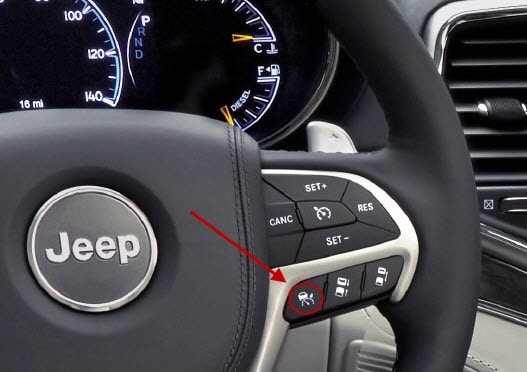Table Of Content

Cruise control will help you maintain a nearly constant speed, which can make driving on the highway and in other long and straight conditions simple and convenient. Adaptive cruise control doesn't stop at letting you set the speed you want to travel at. You'll also be able to rely on your vehicle to slow itself down before rear-ending a car in front of you, even if that vehicle slows down below the speed you set for your cruise control. If the system doesn’t detect a vehicle ahead, Adaptive Cruise Control works just like cruise control and maintains your selected cruise speed. When the system detects a vehicle ahead of you in your lane, it will automatically slow down or speed up your vehicle to maintain your selected following gap.
ADAPTIVE CRUISE CONTROL CAN FOLLOW A VEHICLE TO A STOP
If traffic slows to a stop, most ACC systems will bring the car to a complete stop, then bring it back up to speed when traffic gets going again. Others work only within certain speeds and/or might not start to accelerate automatically. Radar-based ACC is often sold together with a precrash system,[43] which warns the driver and/or provides brake support if there is a high risk of a collision. Also in certain cars, it is incorporated with a lane maintaining system which provides a power steering assist to reduce steering input burden on corners when the cruise control system is activated. Such systems may use a radar, laser sensor or a camera setup allowing the vehicle to brake when it detects the car is approaching another vehicle ahead, then accelerate when traffic allows it to.
Can my vehicle switch between Adaptive Cruise Control and cruise control?
Today, most ACC systems use a combination of laser, radar, or camera sensors to help overcome the shortfalls of each individually. Radar-based systems function in essentially the same manner as laser-based systems, but with the benefit that radar can penetrate through inclement weather and other obstacles more easily. I find it reduces tension and fatigue,” wrote a 2020 Subaru Outback owner. “It is so nice to just set it and let the car worry about the traffic,” they told CR. Radar-based sensors can be hidden behind plastic fascias; however, the fascias may look different from a vehicle without the feature.
Read this next
According to NHTSA, more than 400,000 people are injured in rear-end crashes each year. Automatically speeds up and slows down your car to keep a set following distance relative to the car ahead. Tesla’s Autopilot, GM’s Super Cruise and Ford’s BlueCruise go one crucial step beyond that by allowing you to drive without a hand on the wheel. The GM and Ford systems are geofenced to operate in only specific stretches of highway, whereas Tesla’s system operates more freely (for better and for worse).
What Is Adaptive Cruise Control?
The system then assumes control of the accelerator, maintaining the set speed until the driver engages the brake. TomTom creates technologies for a moving world that supports all levels of autonomous driving. To learn more about how the ADAS Map is already powering automated vehicles on the road today, download the product sheet. Bosch has developed several ADAS functions relying on TomTom ADAS Map data services for intelligent cruise control, upcoming curve alerts and jam tail warnings. All these are critical components for car manufacturers developing the latest standard in automated driving systems. The Subaru application of ACC is known as Advanced Adaptive Cruise Control.
The future of mobility is connected
In short, this smart driving assistance makes sure everyone doesn't follow too closely behind each other, improving the safety of all traffic members from autonomous trucks to passenger cars. The "adaptive" part of ACC is what makes it stand out from other cruise control systems. It refers to the ability to alter the vehicle's speed in response to upcoming traffic conditions. While ACC is an innovative feature progressing automotive technology, the human driver remains responsible for all actions behind the wheel. Drivers can lean on adaptive cruise control when the situation allows but always need to keep their eyes on the road.
Schedule Brake safety Inspection
Essentially none of the ACC systems on the market today are standalone systems. In particular, Lane Departure Assist and Lane Centering monitor lane markings and can help assist drivers with steering to avoid accidental drifting into another lane. The advanced ACC sensors can also recognize another driver approaching and adjust your vehicle’s placement within the lane to create a safer distance on all sides. These systems will alert you when an object is within a certain range of the front of the vehicle, alerting the driver in the event they aren’t paying attention.
Multi-sensor systems
Weather-aware fuzzy adaptive cruise control: Dynamic reference signal design - ScienceDirect.com
Weather-aware fuzzy adaptive cruise control: Dynamic reference signal design.
Posted: Wed, 09 Aug 2023 01:48:29 GMT [source]
This information also provides additional data that supports accurate speed and distance adjustments. Is anyone surprised that carmakers can’t seem to agree on a single term for adaptive cruise control? Some call it adaptive cruise control as the root and then tack something onto it. The TomTom ADAS Map is designed for this purpose, providing a range of attributes that power modern ADAS systems. When towing a trailer, Adaptive Cruise Control driving characteristics, such as following gap, acceleration rates and braking rates, may be modified to provide a better towing experience.

This technology can make cruise control more useful by taking some (but not all) of the workload off the driver. Some of today's systems can control the vehicle's follow distance and speed from a stop to highway speeds and back again, with minimal or no input from the driver, like Mercedes-Benz’s Distronic Plus or Ford’s ACC with Stop & Go. Some systems, like the standard version of Distronic or Honda’s ACC, will brake all the way to a stop, but then deactivate themselves. Other systems skip the low-speed functionality in favor of a more traditional high-speed adaptive cruise control system intended for highway usage.
The benefits of adaptive cruise control make it a worthwhile technology to continue investing in. It provides longitudinal control of a vehicle, such as acceleration and braking. Increasingly, it can be combined with steering assist technology like lane centering for automated lane changes. The longitudinal and lateral control systems working together leads to autonomous driving, the next mobility revolution, which is expected to evolve rapidly over the next decade. You have probably seen the words ‘Adaptive Cruise Control’ printed in advertisements and mentioned in car reviews, but what exactly is it? In this post, we’re going to answer that and other frequently asked questions with regards to adaptive cruise and also give you a brief backgrounder on the history of the technology.
Adaptive cruise control helps drivers adjust the speed of their vehicle. As drivers are getting more and more comfortable with using ACC while driving, the expectation for an even longer duration of continuous operation time for the system is rising. As new enhancements are made, the market is shifting to a new standard in ACC, called intelligent cruise control.

The integration of location technology with other sensor inputs helps ACC adapt to varying traffic conditions and road layouts with precision. Adaptive cruise control relies on a combination of radar sensors, cameras and location data. By detecting changes in the speed and noticing sudden actions of the car in front, ACC can adjust the speed or even bring its vehicle to a complete halt if necessary. This makes driving not only a lot safer but also more convenient and efficient.
In these instances, the driver must then re-engage the system once traffic resumes. A radar-based system, such as Toyota’s Dynamic Radar Cruise Control system, use a front-mounted radar transmitter to detect objects ahead. The radar will detect how far away a vehicle is in real-time and communicate this information with your vehicle, allowing it to maintain a consistent distance from the vehicle ahead as you drive down the road. Some of these radars will be built into a vehicle’s front fascia or worked into the existing grille badge, like the Genesis fascia pictured below. Real-time location data allows the ACC system to adjust to changing traffic patterns and road conditions, enhancing its predictive capabilities.
Most automakers display the distance using bars, with 1-4 distance settings usually offered. A camera-based system, such as Subaru EyeSight, uses cameras to scan the road ahead. These systems will use a computer to read the camera’s image and help to detect and identify various objects on the road including vehicles and pedestrians. EyeSight is a bit more simple and straightforward than comparable adaptive cruise control systems and enables Subaru to implement semi-autonomous safety tech on most of its vehicles. Drivers new to ACC tend to become nervous when the car comes close to the one ahead without their foot on the brake pedal. Most of these systems also come with accident avoidance and collision warning features, like emergency braking and alert lights, to help the driver maintain a safe distance.
Adaptive cruise control is an important feature of the development of self-driving cars. Fully autonomous vehicles will need ACC to track the cars ahead of them as well as those on the side beginning lane changes. While it will be critical to cars of the future, current drivers have much to gain from cars that already utilize ACC. Car manufacturers today with ACC include Acura, BMW, Chevrolet, Ford, Subaru, Toyota, Volvo, and many more. Adaptive cruise control is at the center of the pile of electronic driving aids some automakers believe could form the basis of fully autonomous driving. We’re nowhere near autonomous cars, though, and it’s important not to mistake adaptive cruise control and other related technologies for full autonomy.
When there is no vehicle ahead, the ACC will function as a standard cruise control system, accelerating to the set speed and maintaining it. Adaptive cruise control (ACC) is like traditional cruise control, but smarter. ACC systems allow you to set a desired speed until your vehicle encounters slower-moving traffic.

No comments:
Post a Comment